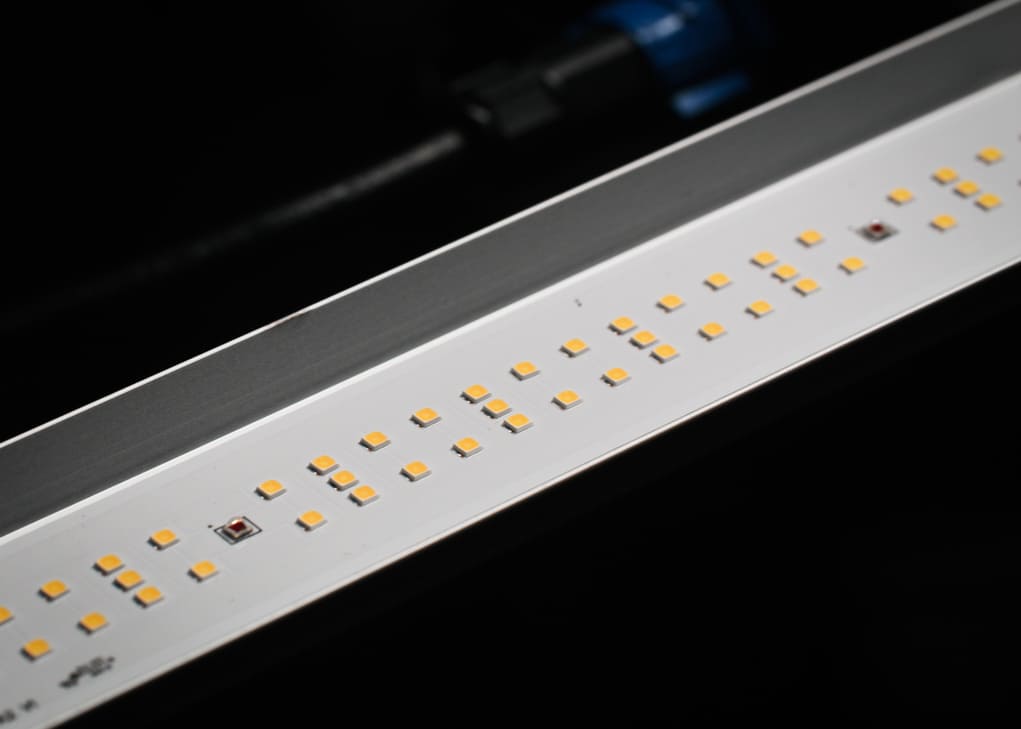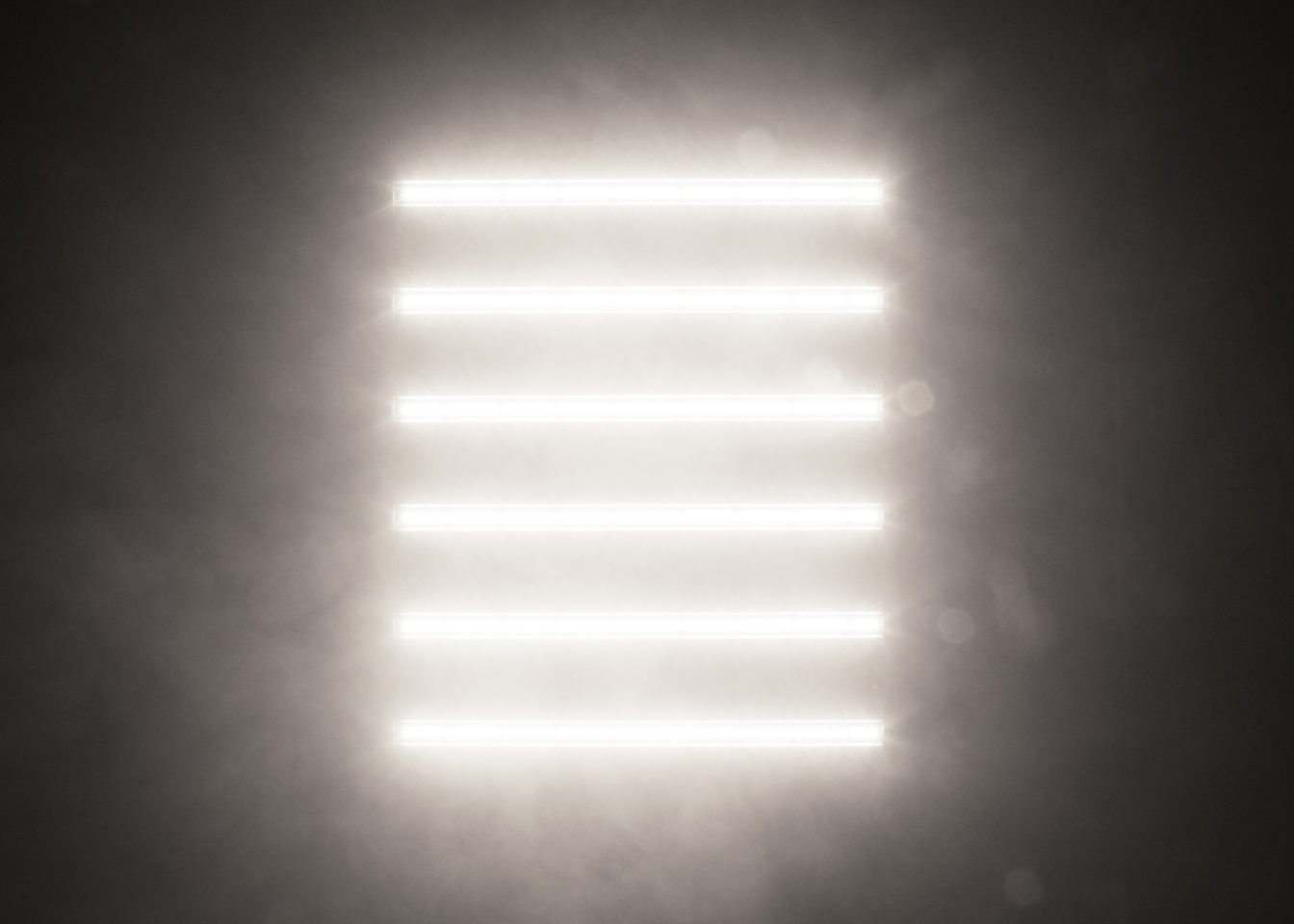Innovation is moving ever faster in the cannabis industry. Since Spectrum King debuted its patented full spectrum LED lighting fixtures almost a decade ago, growers have increasingly been moving toward LED technology to increase yields, improve the quality of crops, and decrease operating costs.
LED grow lights have gone through some major changes over the last few years, with greater demand driving companies to create new solutions in an ever-growing industry. But what exactly goes into setting up an LED grow light assembly – and is it right for your operation?
Before diving into the specifics, you should first ask yourself a few questions:
- Are you growing in a greenhouse and thinking about supplemental lighting, or indoors where your fixture will need to do all the work?
- What is the size of your canopy?
- What are you intending to grow?
A firm understanding of your operation is essential when determining whether to switch to LEDs. If you understand the operating environment in detail, it will give you more control over your crop and, ultimately, better results. By understanding the operating environment and how LEDs will affect it, you can make good decisions up front that will pay off many times over.
As you consider this information, keep in mind that balance is everything. Each component of a grow operation needs to work in harmony to create the best results possible – with cooling and moisture control being just as important as the fixtures themselves. Below are some things we think are most important to consider as you venture into LED lighting.

Moving from HPS
If you shift from HPS lighting to LED fixtures, it is likely that the change will alter the grow environment at first. The following are a few critical factors to understand and consider before installation:
- Proximity to canopy: LED lights are more efficient than HPS fixtures, so they can alter the temperature of the room by emitting less heat. The change in temperature can change the amount of moisture in the air, which affects the vapor pressure deficit (VPD). In most cases, you will be using less HVAC and running LED rooms at a higher temperature than HPS rooms. It’s important to be able to modify the temperature at the canopy level to make sure that the moisture level stays where it should be, and you should pay close attention to how you’re going to adjust your temperature when you install LED lights. Spectrum King’s spectrums have little to no output in the IR region (800+nm). This region is purely translated to heat onto the canopy, which increases the likelihood of burning your crop. This is why HPS lights are mounted at a much farther distance, and our LEDs can be used closer to the canopy. This close proximity allows for a significantly higher intensity, and maximizes the photons hitting your plants. This results in bigger and higher quality buds. For this reason, it’s good to have simple, flexible mounting options, so you can get the optimal temperature range by making fine adjustments where it matters most, and benefit from the higher intensity of close proximity.
- Lighting layout: When examining options, think through the quantity of lights you’ll need, and how you plan to grow. One nice thing about LEDs mounted close to the canopy is that they work in racking formats, allowing you to double your canopy relative to single-tier HPS setups. If you do this, you have to keep in mind that racking might change the airflow around the plants. You should consider installing a fan system on the racking, and also consider whether your fixture is helping you to manage the microclimates that can develop. If you’re using LEDs in a single-tier setup, hanging close to the plants, you should also consider moving fans from the top of the room to the sides, so that air flows through the plants rather than top-down where it would be blocked by the back of the light. Spectrum King’s Phoenix line uses a proprietary cryotherm technology that maximizes airflow through the fixture and helps eliminate hot spots that can develop in racking formats. It helps to keep the canopy cooler, while still providing industry-leading photon output.
- Greenhouse considerations: A greenhouse grower can use supplemental LED lighting to extend the day for the plants, and add some intensity on cloudy days. One thing to keep in mind is that a big fixture will create a lot of shading in a greenhouse environment as the sun moves overhead, so think about how big the fixture you’re installing is. This winter, Spectrum King will be releasing its new point source Maui line, which provides industry leading output from the smallest footprint in the game (including HPS), meaning you get maximum light and minimal shade on your plants. Stay tuned for more details on Spectrum King LED’s Instagram page and blog.

Components of an LED Lighting System
With these factors in mind, it is time to start shopping. As you shop, you’re going to encounter a lot of marketing pitches, with varying levels of accuracy. Make sure you understand the basic LED components to help you make informed decisions and ask the right questions as you compare products.
An LED fixture can be broken into four parts – diodes, driver, surge protector and frame.
- Diodes. “LED” literally stands for Light Emitting Diode, and these diodes are what actually light up on the underside of the fixture. In LED fixtures, diodes dictate much of the light’s performance, and it’s extremely important to make sure your lights have high quality diodes.
- Driver. The driver is the component that powers the fixture, and ensures that the power going to the diodes remains consistent.
- Surge protector. Just like any other electrical equipment, LED lights require a surge protector designed to protect the fixture from any sudden increases in electrical current. Without surge protection, any spike in power could fry the whole fixture or assembly, potentially putting your entire operation at risk.
- Frame. The frame itself is equally important, particularly for those retrofitting for older HPS lights. Some LED fixtures are very heavy, and can strain a structure. For this reason, Spectrum King makes the lightest frames in the industry, meaning you’ll be able to hang them confidently and move them easily.

Why Quality Counts
The most common killer of LED assemblies is a power surge to the driver. An outage for even one day could be detrimental to a crop, so investing in a high-quality product with tried-and-true surge protection is like buying extra insurance for your facility. Spectrum King is the only manufacturer to offer dual surge immunity on both the driver and LED board in all of its lights, providing two opportunities for the light to react in mere nanoseconds, stopping surges before they do real damage to the fixture.
It makes sense to invest in quality fixtures that have been designed to provide the highest output without busting the bank. Spectrum King prides itself on providing the absolute best value in LED lighting, with industry-leading output and quality at prices that will help you grow big at affordable prices. For example, SK’s Phoenix 1050W linear LED has been made with the highest-quality diodes on the market, and operates with an industry-leading PPE rating of 2.8. It also provides up to double the photon output per dollar compared to its competitors.
Another thing to think about is what lights will need to endure in a grow environment. It is inevitable that condensation will be a factor, so seek a light with a tested IP rating (measurement of how protected the LEDs are to water and dust) that offers ultimate protection. An IP65 rating means that the light has been tested by a third-party lab, and is dust tight and water resistant to direct spray from a nozzle. All of Spectrum King’s lights are at a minimum IP65 rated.
Finally, cultivators should seek a lighting manufacturer that can also serve as a trusted business partner. Good manufacturers not only sell products, but also provide as many tools and resources as possible to offer growers choosing LEDs the best chance of success. This is precisely why Spectrum King LED offers personalized support to help with every aspect of growing with LEDs, from installation to managing the facility. We also facilitate tours of our partner facilities, so you can see our lights in action for yourself.
Growing cannabis is not easy work. There is a lot that goes into creating a successful ecosystem, and the last thing a grower wants to worry about is a faulty lighting assembly. The future of cultivation is here, and it begins with LED lights. Reach out to Spectrum King LED at sales@spectrumkingled.com or click here to make the switch.















transsexuelle toulon is great for your own sexy chat contacts with hot girls in France